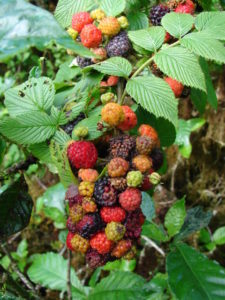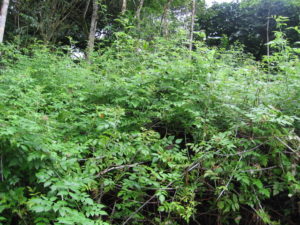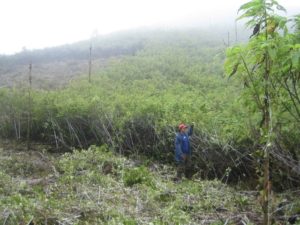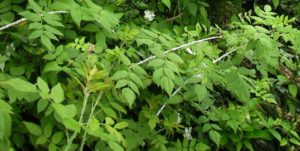Project Description
Mora Biocontrol
Locally known as Mora, the invasive blackberry (Rubus niveus) was introduced to the Galapagos in 1968. Currently it is considered one of the worst weeds in the islands. Dense spiny thickets grow up to 3 meters tall and cover over 30,000 ha, affecting farmland and preventing the unique highland forest dominated by an endemic daisy tree from regenerating. The fast growth and large seed bank make Mora very hard to control, leading to heavy and regular use of herbicides or even abandonment of farmland.
A partnership between the Galapagos National Park Directorate (GNPD), the Charles Darwin Foundation (CDF) and CAB International (www.cabi.org) aims to identify a suitable biological control agent for Mora, which if successful could offer more effective control of this species. This will allow for the recovery of native vegetation and for farmers to reclaim agricultural land for cultivation.
At present CABI scientists are searching for potential biocontrol agents from the native range of the blackberry (India to China*). Once identified a rigorous multi-year testing process must be carried out. This will ensure that the biocontrol agent poses no threat to native, non-target species, or related cultivated species like the commercial Andean raspberry (Rubus glaucus) or ornamental roses both grown on mainland Ecuador.
*This initial work has been funded by the FEIG (Fondo para el control de especies invasoras de Galapagos), a trust fund of the Government of Ecuador.
Classical biological control (or biocontrol) is used worldwide in the battle against widely distributed invasive species. This approach identifies natural enemies, such as insects and diseases, from the native range of the invasive species that only attack the target species. Following strict testing procedures, the natural enemy is introduced into the new area where it reduces the impact of the target species. Biological control isn’t new to Galapagos; the Australian ladybug was introduced to control the cottony cushion scale and was highly successful.
Funding
1. Donations go directly to the implementing agencies (Charles Darwin Foundation, or Galapagos National Park Directorate) or are managed by GCA.
2. GCA incurs only a few operational costs (running the website, bank fees etc) and asks for a contribution of 1 USD per donation to contribute to these costs, unless you specify that you prefer all of your donation to be used directly for the project.
3. The implementing agency will provide an annual breakdown of how the donation sent by GCA was used. This will be sent to all donors upon request.




